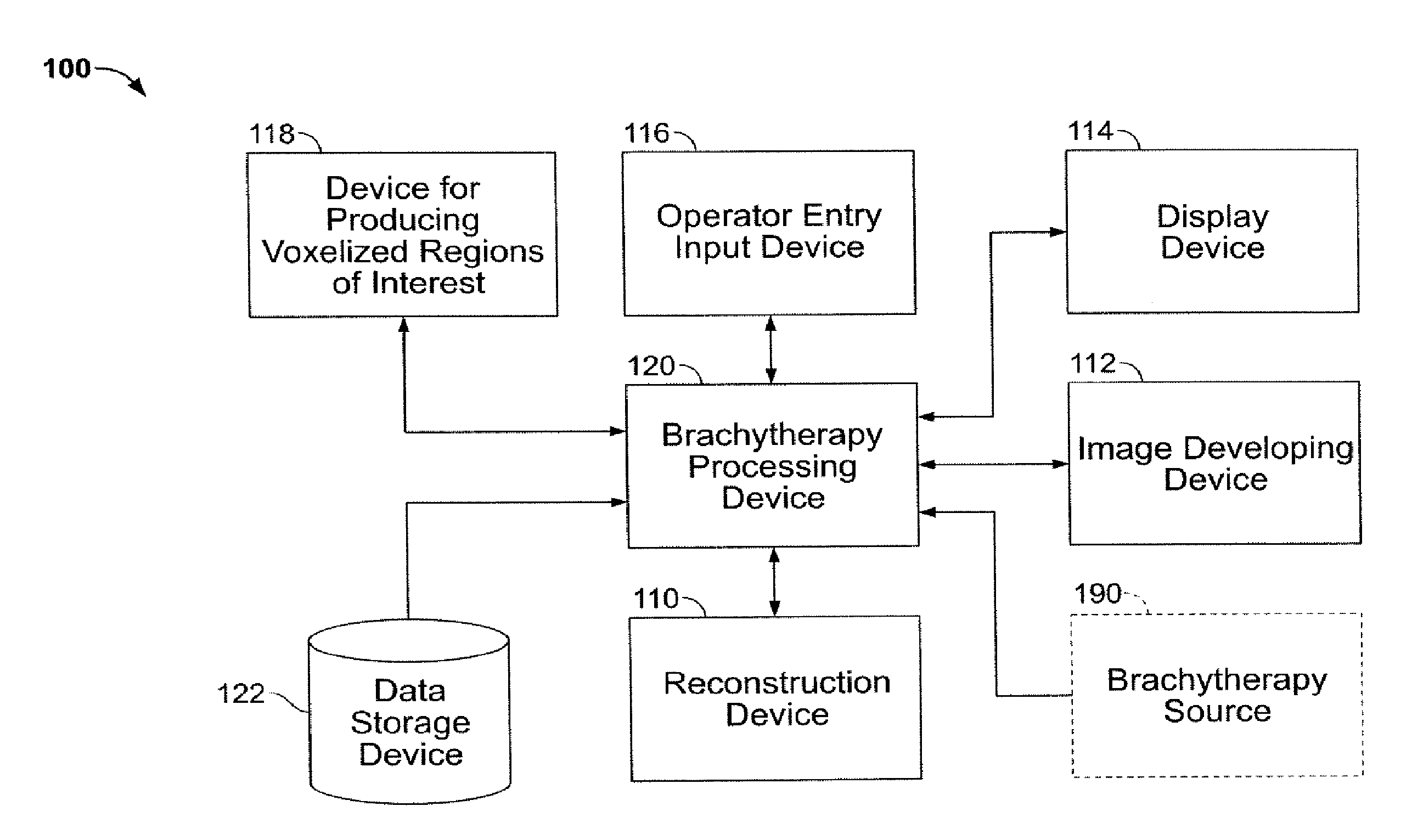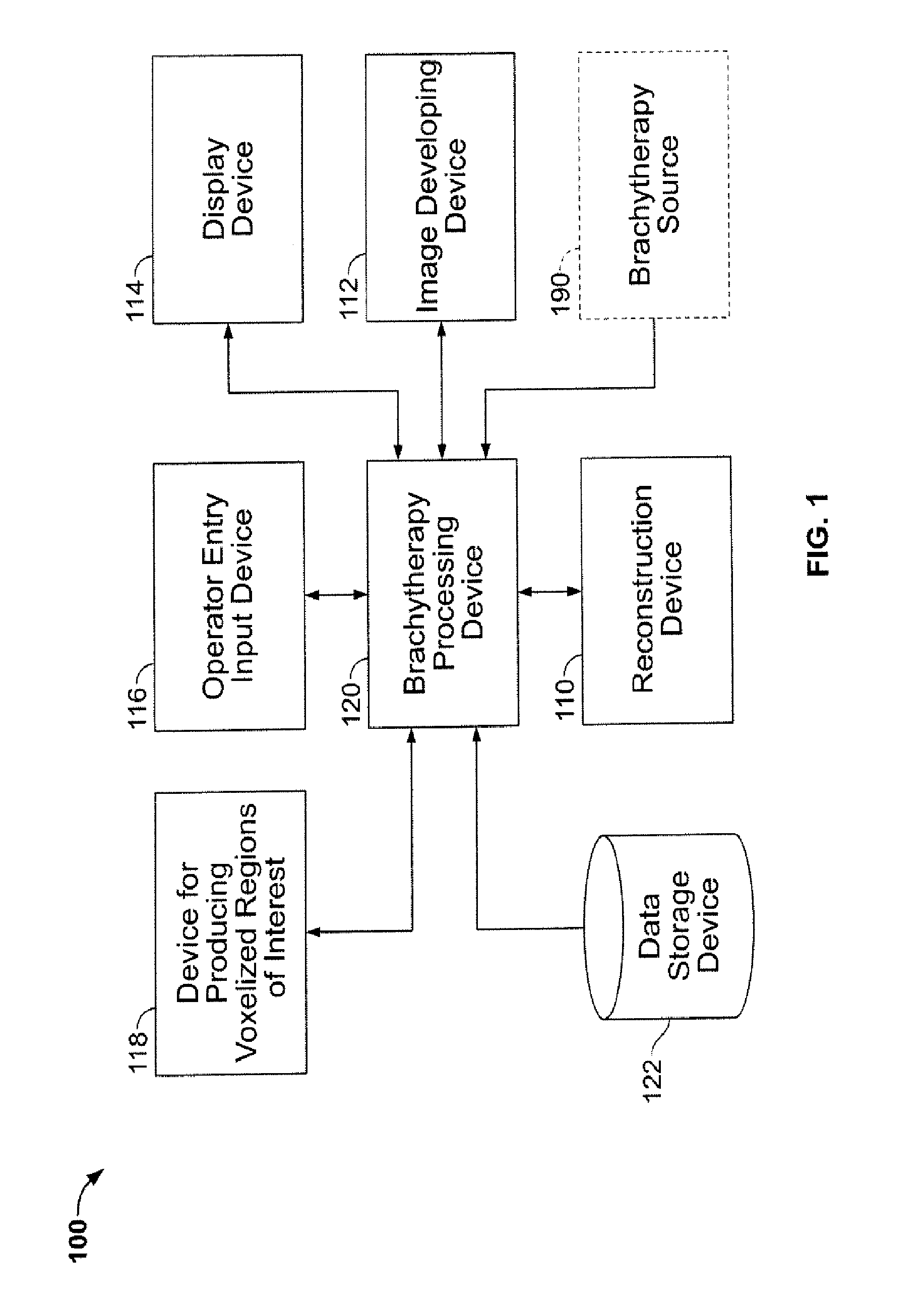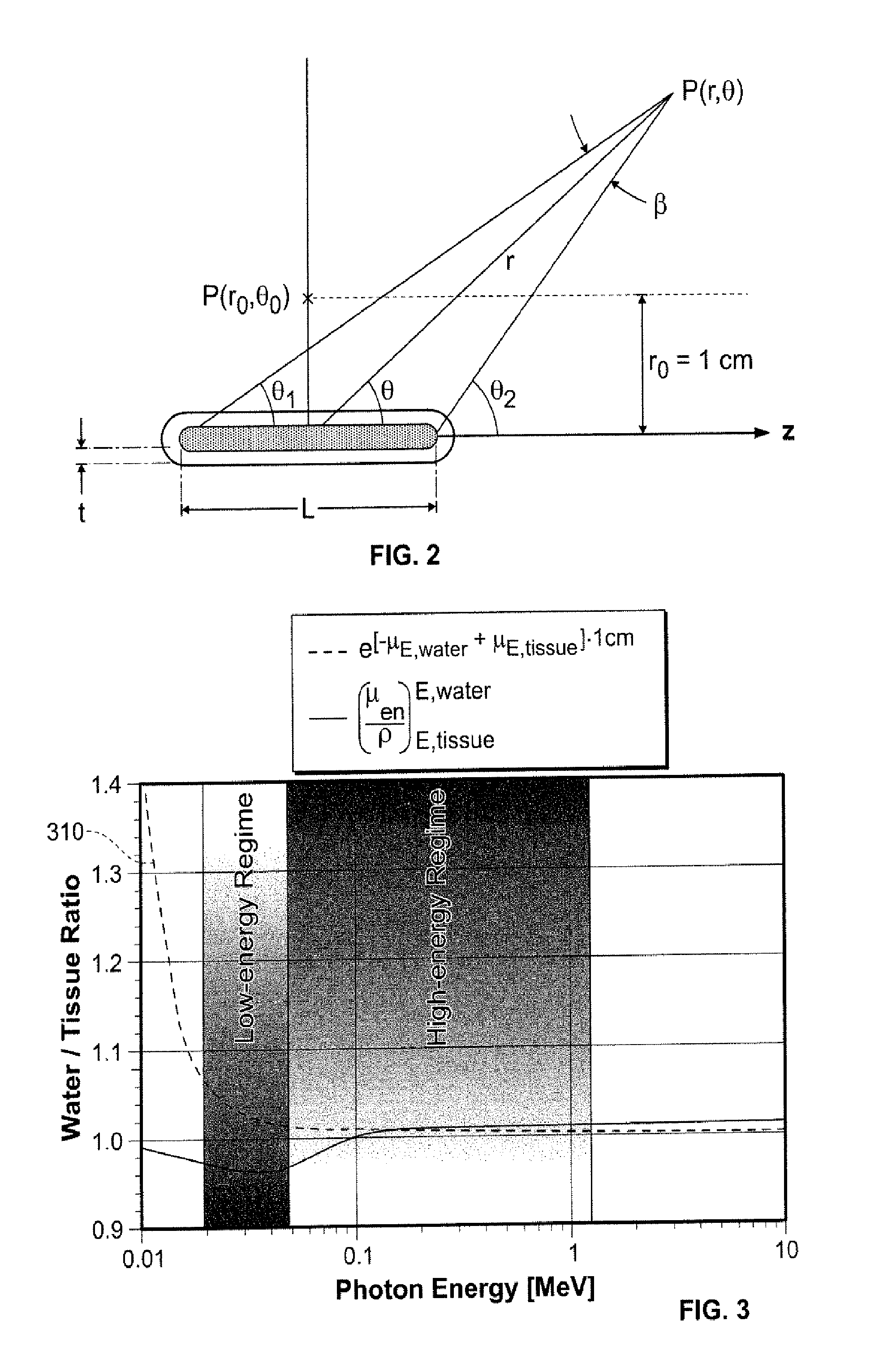System and method of clinical treatment planning of complex, monte carlo-based brachytherapy dose distributions
a brachytherapy and monte carlo technology, applied in the field of system and method of brachytherapy utilization, can solve the problems of clinically relevant limitations in calculating patient dose, the dose distribution of brachytherapy treatments using high-z shields or significant material heterogeneity is not currently well modeled using conventional tps
- Summary
- Abstract
- Description
- Claims
- Application Information
AI Technical Summary
Benefits of technology
Problems solved by technology
Method used
Image
Examples
Embodiment Construction
[0062]The following detailed description of the invention refers to the accompanying drawings and to certain preferred embodiments, but the detailed description does not limit the invention. The scope of the invention is defined by the appended claims and equivalents as it will be apparent to those of skill in the art that various features, variations, and modifications can be included or excluded based upon the requirements of a particular use.
[0063]The American Association of Physicist in Medicine (AAPM) Task Group No. 43 (TG-43) brachytherapy dosimetry formalism is well established and permits calculation of dose distributions for diverse circumstances, including low-dose rate (LDR) permanent prostate implants, gynecological implants using temporary high-dose rate (HDR) 192Ir implants, and temporary episcleral plaque brachytherapy procedures. Conventional treatment planning systems (TPS) use the AAPM TG-43 brachytherapy dose calculation formalism, which is based on applying the s...
PUM
 Login to View More
Login to View More Abstract
Description
Claims
Application Information
 Login to View More
Login to View More - R&D
- Intellectual Property
- Life Sciences
- Materials
- Tech Scout
- Unparalleled Data Quality
- Higher Quality Content
- 60% Fewer Hallucinations
Browse by: Latest US Patents, China's latest patents, Technical Efficacy Thesaurus, Application Domain, Technology Topic, Popular Technical Reports.
© 2025 PatSnap. All rights reserved.Legal|Privacy policy|Modern Slavery Act Transparency Statement|Sitemap|About US| Contact US: help@patsnap.com



